Critical Mass last Friday night was another really remarkable ride… I want to send special thanks out to whomever got in front and made so many great decisions about twists and turns, taking us on a wonderfully snaking ride through downtown before we eventually made it all the way down Mission Street (after a nice ride through the center of the Civic Center right at City Hall before zigzagging around it), where we turned west on Cesar Chavez and then for the first time ever in local Critical Mass history we went out San Jose all the way under I-280, quite a ways west before turning back on to Alemany Blvd. Remarkably many hundreds made the whole trek, including another lovely set of choices through the Bayshore/Barneveld/Jerrold nexus to a long-awaited stop at Jerrold and 3rd. Hundreds showed up there! A magical night… here’s a shot of people whipping down San Jose where it’s basically a freeway going under another freeway…
Some of my pals from the Alemany Farm and Bike Kitchen have planted a lovely garden on a derelict patch of land at Stanyan and Fulton. After bringing it along over the past few months, the absentee landlord, an old San Franciscan woman who now lives in Hawaii, ordered her property management company to tear out the garden and leave the land as it was, abandoned and covered in trash!… a pointless and vindictive approach to a good use of nearly public land… Here’s a couple of shots of their weekend encampment which garnered universal support from neighbors and passersby…
A week ago I walked up Bernal Heights and caught this lovely sunset moment, apparently settng the Bank of America building on fire!
Last night the wind was gusting incredibly strongly as we walked up Bernal, rushing to reach the top before the sun disappeared behind the hills, and just made it! The wind howled as we embraced and for a brief amazing moment, a three-way kiss between us and the wind filled us with wonder… no photos for that one! Walking quickly to the east, the full moon rose over the bay, and we had a lovely walk up and down the eastern staircases… and you notice I’m saying ‘we’?… here she is, arriving home to a pile of chocolate, my spring delight, Adriana…
I’ve disappeared from blogging a bit lately, partly thanks to Adriana, but more because I’m deep into rewriting my book finally. The energy it takes to blog is pretty similar to what it takes to concentrate on writing the book, so I’m going to leave you with my intro to the book in this entry, but may not post too much for the next little while…
In the past couple of weeks I got a great sports fix too, with 1st round games of the NCAAs followed by sitting courtside for the Warriors-Phoenix game last Thursday…
Can’t beat sitting right on the edge of the game, especially when it’s such a thrilling barnburner as this one was: 45-33 at the end of one quarter! final: 124-119 Warriors, a fantastic up-and-down, high scoring, great passing game…
Made my semi-regular ride up Twin Peaks last week too, into the dense fog… I got to play Corcovado at the top:
even in dense fog the wildflowers are in full effect up there:
So here’s the working introduction to my new book… back again one day soon, hopefully with a nearly finished manuscript. But then again, I often can’t resist posting when something strikes me… so probably I’ll be back sooner than later…
A New Politics of Work
Nowtopia is a book about a new politics of work. It profiles tinkerers, inventors, and improvisational spirits who bring an artistic approach to important tasks that are ignored or undervalued by market society. Rooted in practices that have been emerging over the past few decades, Nowtopia’s look at work breaks new ground by identifying self-emancipatory class politics outside of wage-labor. Engaging with technology in creative and experimental ways, the “nowtopians” we meet here are involved in a guerrilla war over the direction of society. They are also establishing or re-animating human communities, networks, and circuits from which new initiatives will continue to emerge well into the future.
A lot of words have been written trying to describe the new social fractions that keep emerging from the complex and multi-layered hierarchies and conditions of modern life. Slackers, bohemians, Generation X, Y and Z, “no collar” workers, and many others try to capture the rootless, temporary, partial identities that have supplanted old ideas of the working class. These new fractional identities designate a wider sense of self with vaguely dissident politics but one that is still linked to employment, however tenuously. Radical workers’ movements of the past two centuries have always been firmly rooted in the capitalist workplace. In fact, workers as such have been defined by their relationship to capitalist production. Today’s radical impulses are being developed outside the constraints of wage-work, envisioned and enacted by people who are determined to escape the bounds of being “mere workers”. Traditional theories tend to dismiss such efforts as simply hobbies, or lifestyle choices, failing to see the deeper trajectory of exodus from capitalist society that such work defines.
I am investigating what people are doing vis-Ã -vis work, specifically the self-directed work carried on outside of wage-labor. I make no claim to being comprehensive, or that my relatively small selection of interview subjects is necessarily the “real story;” other investigations based on different assumptions, questions and individuals could produce rather different insights. But I argue that the people I talked to reflect a deeper shift. They represent a different kind of “working class” response to the conditions of life at the beginning of the 21st century precisely because their response is taking place in their “free” time, outside of their wage-labor-defined jobs. This corresponds to some insights of writers analyzing “immaterial labor” performed by self-employed, temporary and occasional workers, people whose working lives are blurring with their non-working lives. I asked about the work people are doing unremunerated, usually collaboratively and in networks of intensive social cooperation, with an eye towards how those practices stay “free” of market logic or get reincorporated into commodified, economically defined behaviors. Commonly there is an ongoing conflict, or at least tension, at the point of contact between these different ways of engaging in work. It may seem surprising or paradoxical, but my investigation reveals how hard people work when freed from the coercive constraints of wage-labor and arbitrary hierarchy.
The subjects of my inquiry are all engaged in local efforts, firmly rooted in their daily lives and physical locales. Such local examples could be dismissed as meaningless anomalies in the context of an ever-expanding, voracious world market whose logic continues to disrupt and destroy human and natural life in favor of profit and plunder. But as the geographer David Harvey has noted, examples of “militant particularism” like we find in Nowtopia start local but can spread across society with surprising speed. The new apparatus of global production helps speed up the extension of market society of course, but inevitably it is also speeding the spread of social opposition, the sharing of experiments and alternatives. Our moment in history is at least as exhilarating as it is daunting.
We meet a wide range of people in this book who are grappling with the split between making a living and expressing their full humanity partly through freely chosen work. Ben Guzman makes TV commercials in Los Angeles as a video editor to earn his money, but his real passion led him to co-found the Bike Kitchen, one of dozens of do-it-yourself bike repair shops that have emerged around the world during the past decade. Robin Haevens is now teaching public high school, but started out providing free after-school bike repair classes in one of San Francisco’s most troubled neighborhoods. She’s been in the middle of the “˜outlaw bicycling’ subculture for over a decade, self-publishing and putting into practice the anti-business DIY culture. Guillermo Payet is a former dotcom entrepreneur who has dedicated his time and know-how to creating a open source software project to help local agriculture and the small farmers who are its backbone to build an alternative food system (localharvest.org). Will Doherty is a drop-out from a large computer company who founded the Online Policy Group, an organization that freely provides computer resources for politically edgy groups. Meanwhile, anonymous programmers around the world are engaged in complex collaborations that are leading to an unprecedented communications infrastructure that might someday be the backbone of a self-managed society.
Dozens of people have literally jumped on the biodiesel bandwagon by making their own wagons (and fuel), from the five women who drove across the U.S. in the mid-1990s on waste veggie oil to make a documentary “Fat of the Land,” to the hundreds of trips made since by biofueled bus caravans. Claudia Eyzaguirre, a teacher, responded to 9-11 by co-founding the Berkeley Biodiesel Collective. The tinkering and experimenting that went on in hidden pockets during the past few decades has been seized upon and expanded radically during the past ten years of grassroots biofuels activism, leading to the much publicized “arrival” of biofuels as promoted by the government and major multinationals. But the story is far from finished.
In the yearning for a life beyond money, the annual Burning Man festival has drawn to the northern Nevada desert tens of thousands of revelers seeking authentic connections and artistic freedom. Part-time secretaries, biochemists-turned-janitors, retired professors, social workers, handymen, mechanics, legal aides, and many more job holders escape to the desert to remake themselves and discover new relationships in a commerce-free environment.
Urban horticulture is emerging on the foundation of widespread gardening initiatives in cities across the continent. Immigrants and the poor have reclaimed abandoned and deindustrialized zones with traditional and inventive practices, coaxing food and life from blasted landscapes, creating new human communities in the process. Nan Eastep is part of the City Slicker Farms in West Oakland, producing small crops in vacant lots to provide fresh produce in areas that have been excluded from the new gourmet food movements. Mark Leger is a long-time white-collar worker, but has built on his childhood memories of California’s Central Valley to help sustain and expand a burgeoning community garden movement in Brooklyn, New York (in his free time). Pam Peirce is a founder of the now-defunct San Francisco League of Urban Gardeners (SLUG), and was previously an important figure in the People’s Food System that grew in the wake of the communalist tide of the late 1960s and “˜70s. She has participated in the nonprofit efforts to institutionalize the grassroots food and gardening movements, in the wake of which remain over 100 locally-controlled public gardens with their associated communities and political processes.
Efforts to break away, to create pockets of utopia, socialism in one state, or any number of other co-ops and collectives and social alternatives, have always flourished on the margins of capitalist society, sometimes ebbing and other times flowing, but never to the extent that a radically different way of living has been able to supplant market society’s daily life. The pull of business, of buying and selling, of surviving economically, all exert enormous pressure on the initiatives described in Nowtopia, too. Nowtopians, and anyone determined to free themselves from the constraints of economically defined life, face the same historic limits that have beset all previous efforts to escape. Can the emerging patterns of creativity and technological inventiveness and new communities go beyond the co-optation and re-integration that has absorbed past self-emancipatory movements? I don’t think this book can answer that definitively, but by framing this moment historically and theoretically, I hope to make my own contribution to strengthening their capabilities and perhaps increasing their power to go further than previous efforts towards a world of our own making.


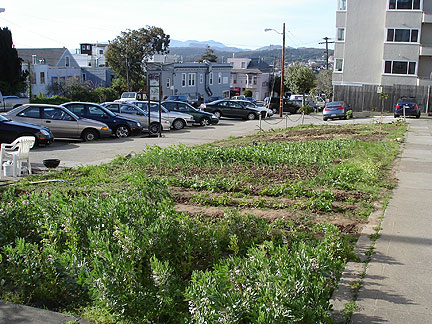
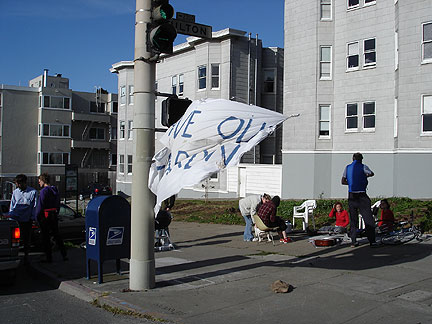

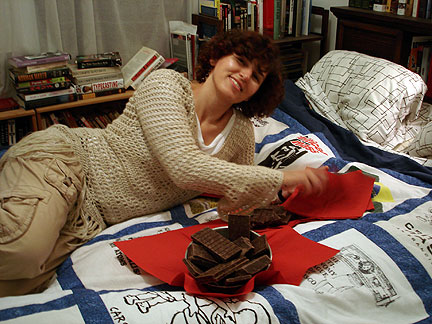
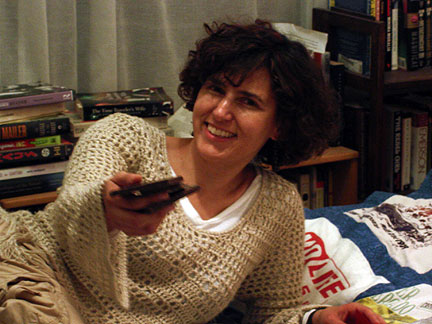
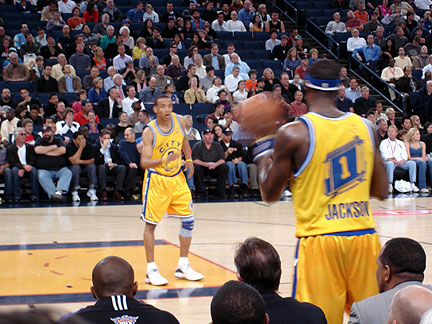
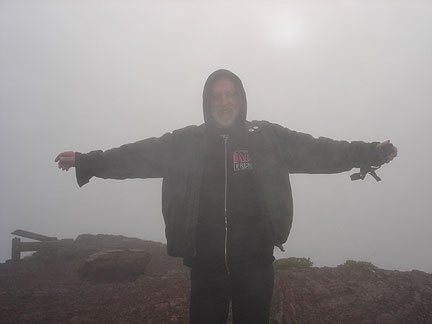













hm!